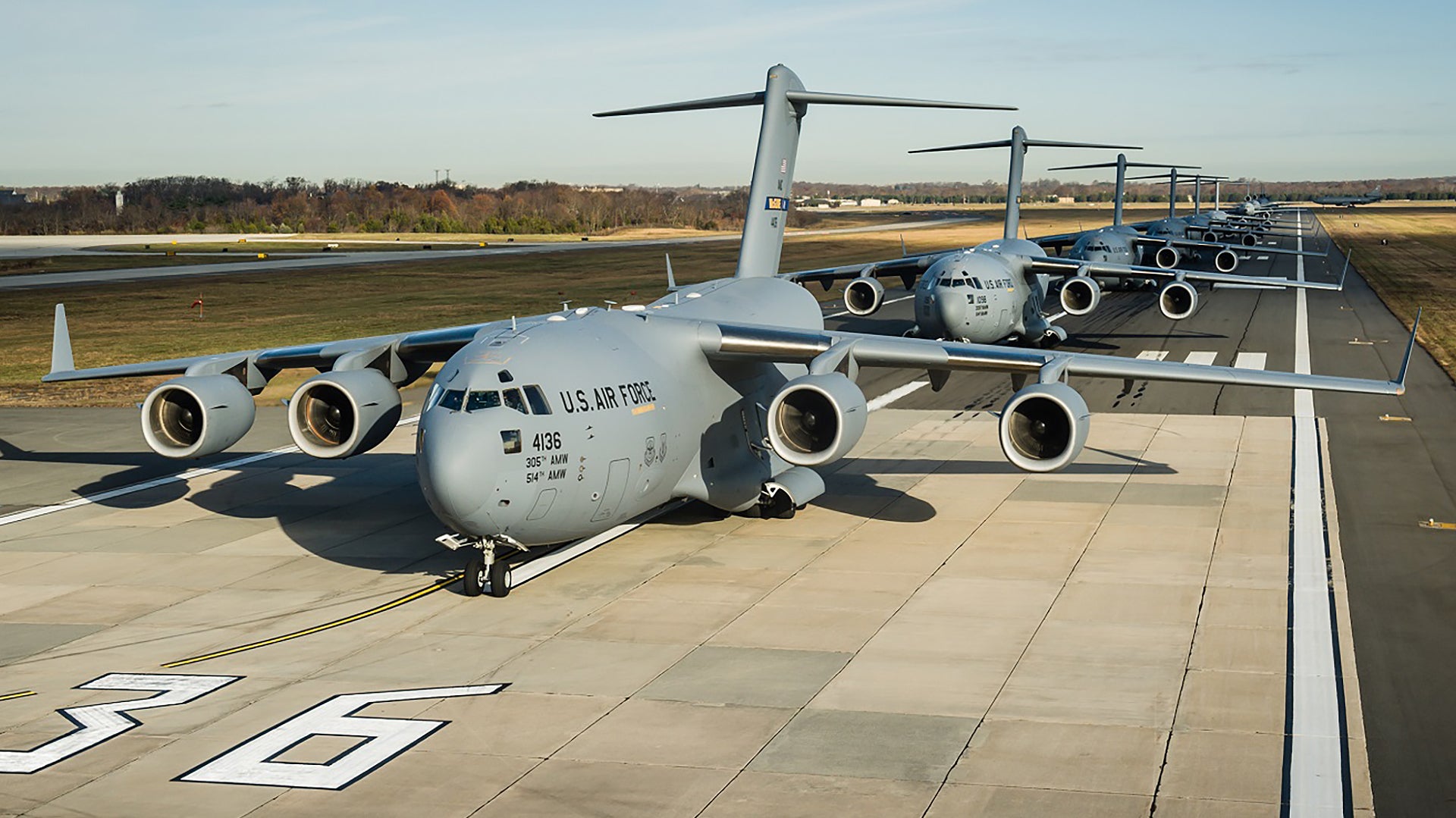As part of a larger push to drastically expand the size of its force, the USAF wants to enhance its ability to move personnel materiel across the globe. The flying force’s vague but grand plan to add 74 combat squadrons to the 312 it already has was first announced by Air Force Secretary Heather Wilson in September. If realized, it would bring the Air Force’s total number of squadrons to 384 sometime around 2030. This had included an additional 14 tanker squadrons and a single extra airlift squadron, but the devil is in the details and part of the USAF’s plan would now see a number of C-130 squadrons be replaced by C-17 squadrons. The problem with that is the C-17 has been out of production for years.
Valerie Insinna of Defensenews.com was the first to report on these new details, which emerged from a roundtable with Air Mobility Command (AMC) boss General Maryanne Miller and reporters late last week. She noted that the plan would include cutting two C-130 squadrons and adding three C-17 squadrons. As such, it would not only fit the framework of the 384 squadron initiative, but it would also match with AMC’s needs. But where would those C-17s come from? Apparently, even Miller doesn’t know, simply stating:
“Those are the details that we have not looked at.”
Restarting the C-17 production line in Long Beach, California is, well, pretty much a non-starter. Doing so would be prohibitively expensive unless Boeing were to invest heavily into such a scheme in hopes of sustained orders from the USAF or America’s allies. At this point, there doesn’t seem to be anywhere near the demand needed to make a business case out of such an endeavor.

An updated C-17 was already being eyed when production wound down earlier in the decade, so putting the exact same C-17 configuration back into production seems somewhat wasteful. At the same time, developing a more capable and efficient sub-type just to create a few dozen aircraft also doesn’t make sense.
Currently, there are no C-17s at the Pentagon’s boneyard in Tucson, Arizona. There may still have a small number of Globemaster IIIs in backup inventory at any given time, some were put into that status during sequester, but just thrusting those into active service really doesn’t solve the total end-strength airlift issue over the longer term.
By rotating the C-17s around from active to guard to reserve units and into backup status, the USAF aimed to extend the life of its fleet of roughly 222 C-17s through the early 2030s. It may be possible to extend the life of some of the C-17s further through additional service life extension programs, but doing so would cost money and may have diminishing returns. Modernization efforts are already underway on the older C-17s as the aircraft had configuration differences as production evolved, but dramatically boosting airframe life beyond 30,000 is another story.
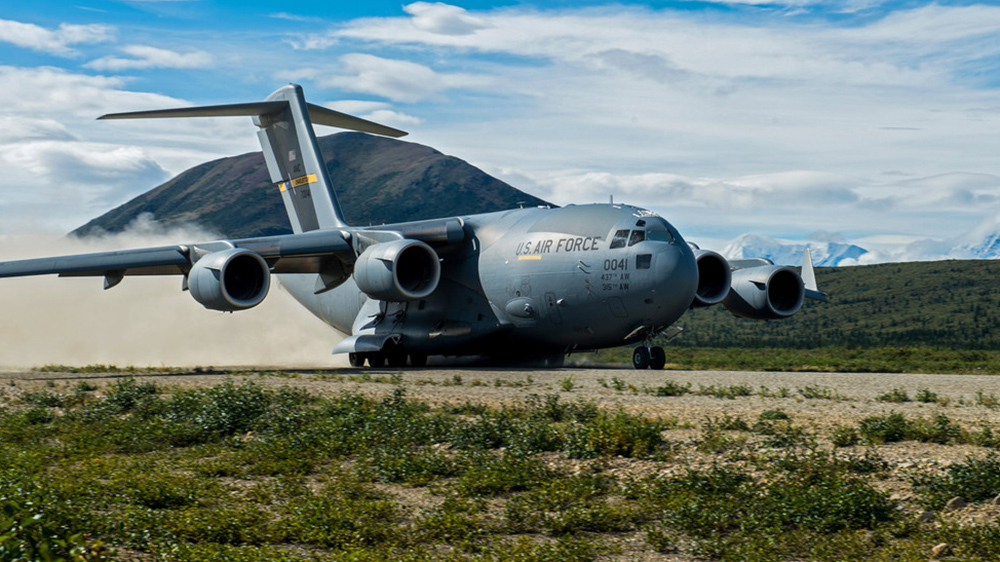
The thing is, the C-17 isn’t really the only solution to this problem as many understand it to be. Yes, the jet has great rough and short-field performance while still being able to cruise at higher altitudes and around 737 speeds. It can carry everything up to an M1 Abrams tank, so its outsized load carrying capabilities are impressive and useful. With the C-17, basically, you get tactical airlift capabilities blended with strategic ones. But there are tradeoffs.
The C-17 isn’t particularly fast or fuel efficient. Its unrefueled range isn’t spectacular either and when you add in aerial refueling to a mission, the price of said mission skyrockets. The fact is that the USAF does a lot of transport missions that don’t really require the C-17’s unique talents and the performance tradeoffs that go along with them. So maybe investing in a more mundane cargo aircraft instead could help make the C-17 fleet more available for the tasks where its combat attributes are most needed.
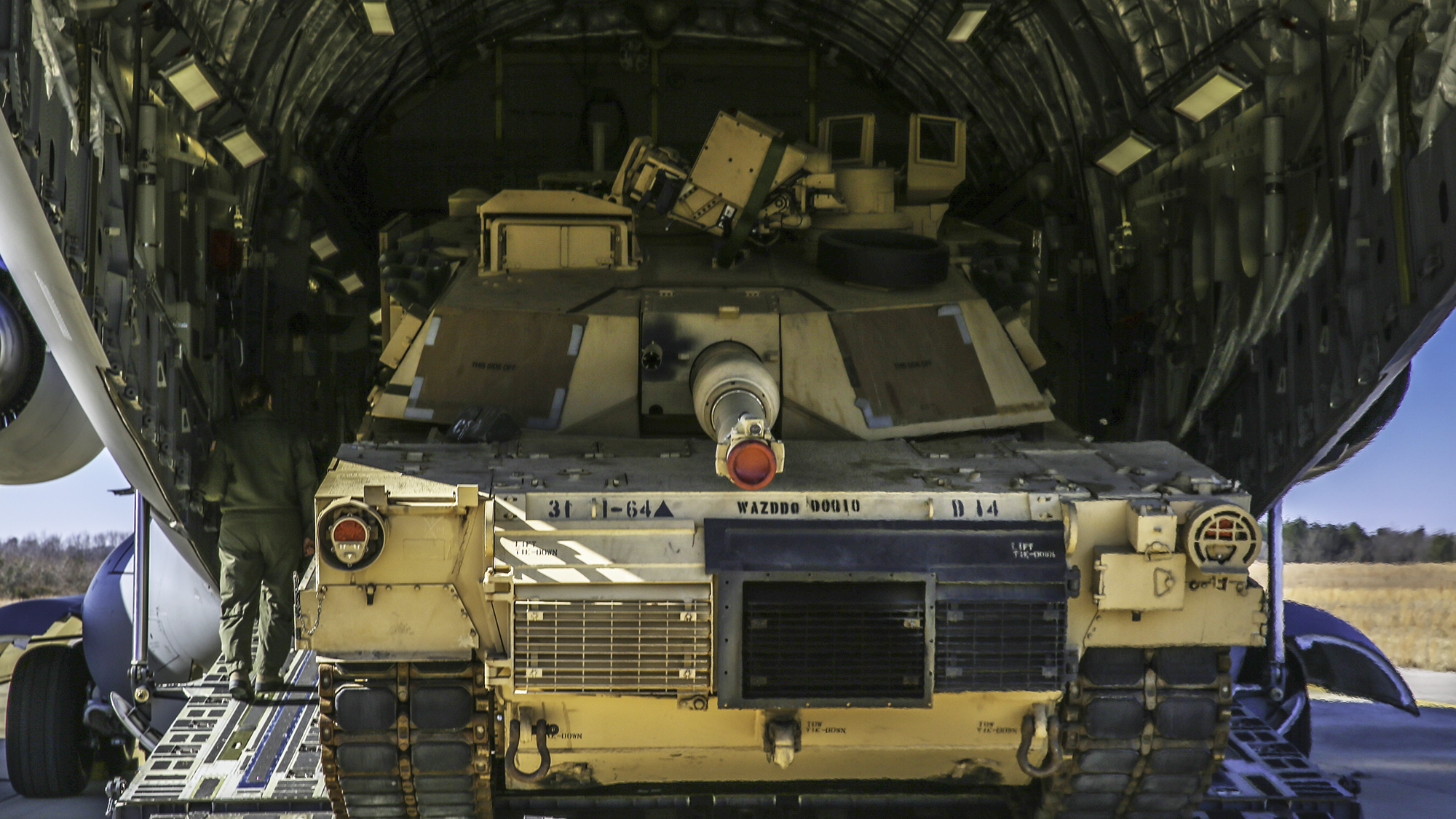
Two airframes come immediately to mind. The KC-46 and the 747-8F. A C-46A version of the KC-46A Pegasus tanker is really a turnkey airlifter. It would have all the avionics, hardening, internal cargo handling capabilities, and logistics and training infrastructure that would be required to support it from day one.
The KC-46 is already capable of a huge variety of airlift missions in addition to its core tanking mission set. It was designed that way. But savings may be had by buying a number of additional airframes in C-46 configuration—without the tanking hardware fitted. It’s possible that provisions could be made for those airframes to be retrofitted as tankers if need be in the future, similar to how late block F/A-18Fs can be configured to accept the EA-18G Growler modification. Above all else, a non-tanker configured Pegasus would be lighter and cheaper.
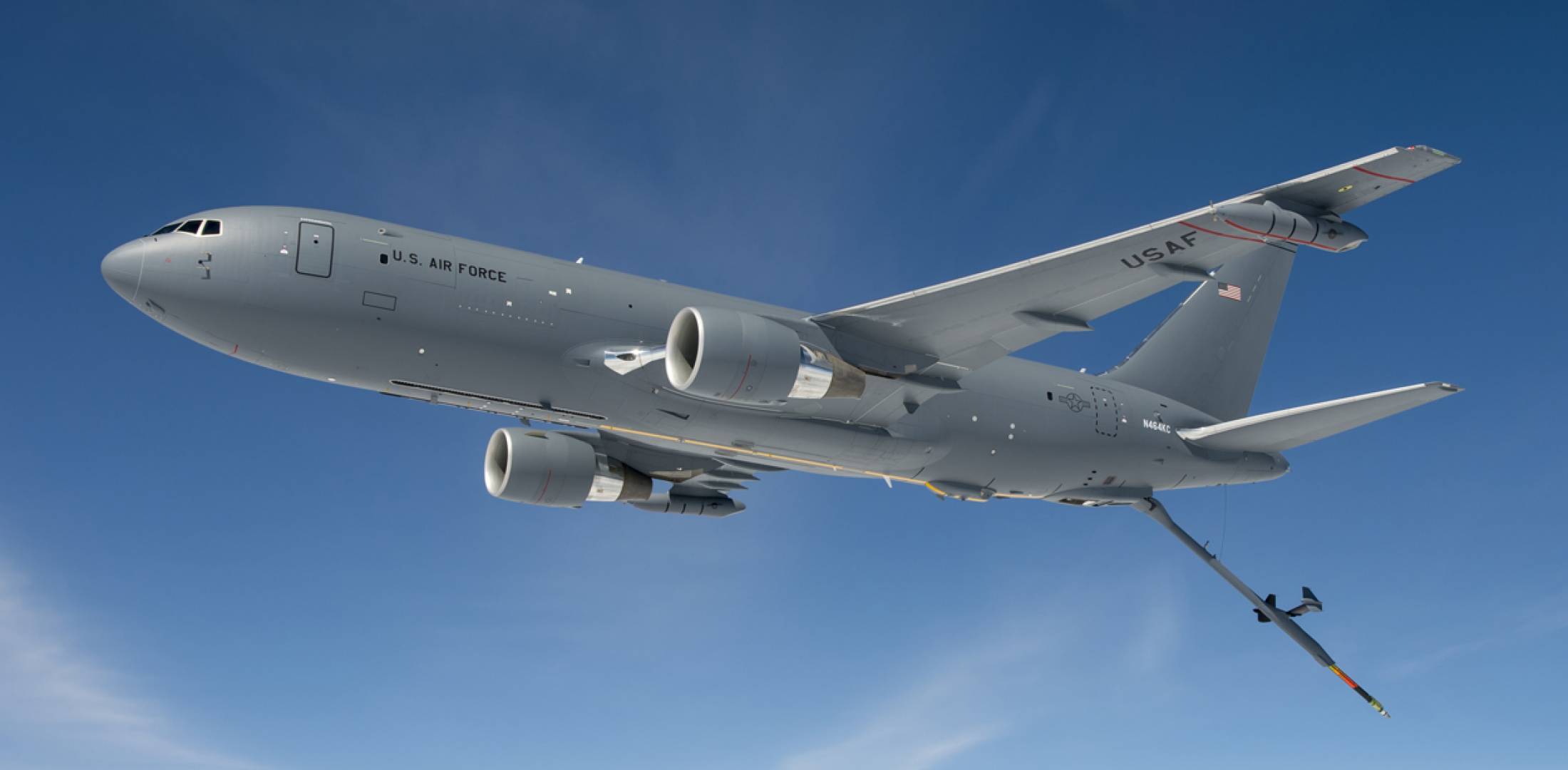
A C-46A could do everything from hauling personnel, pallets of cargo, and even light vehicles. This includes VIP transport and other unique mission sets that don’t require outsized cargo capabilities. Flying into war zones would be no problem for a notional C-46A either as it is already equipped with high-end defensive countermeasures and situational awareness suite. Its communications capabilities are also advanced and it could serve other roles as well by adding modular roll-on, roll-off networking payloads.
It would also be possible to inject C-46 airframes right into existing KC-46 units as they are already proficient in the airlift mission. This would require little infrastructure investment and with small increases in personnel, the USAF could realize a sizeable boost in airlift capability all without impacting the KC-46’s critical tanking mission.
Another option that would allow the USAF to move a lot of materiel fast and more efficiently than via a C-17, and with all with the support and reliability of a modern airliner, would be to procure a number of 747-8Fs. The 747-8i is already being introduced into the USAF’s ecosystem via the two VC-25B ‘Air Force One’ aircraft that are slated to be delivered to the 89th Airlift Wing in the early 2020s.

A massive amount of very expensive developmental work is being done to make these new aircraft possible, much of which would port directly over to a military airlifter variant. With the 747 production line in jeopardy, a small fleet of these aircraft may be had at a very reasonable cost. Having cargo-hauling versions of the 747-8 would also help spread sustainment costs of the VC-25Bs around and assist in training its pilots.

Other options certainly exist, including highly popular freighter versions of the 777, but purchasing a variant of something already in the USAF’s inventory is advantageous for a number of reasons and is more likely to find funding from Congress.
There is also the C-5 component of this equation to discuss as well. Nothing in the inventory can move as much stuff as far as the C-5 Galaxy. There are only 54 of these aircraft in the active inventory, the last of which was just delivered. The recapitalized fleet is set to fly into the 2040s.
Eight C-5Ms had been stored in reserve—another result of sequester. There had been talk of returning these aircraft to operational service, but it’s not clear how far long that plan has gotten as of yet, but based on the inventory numbers we are seeing today, it looks like at least two of the Galaxies were returned to service. The plan had been to return a pair of the jets each year to active flying, with the last of the eight jets entering service in 2021.
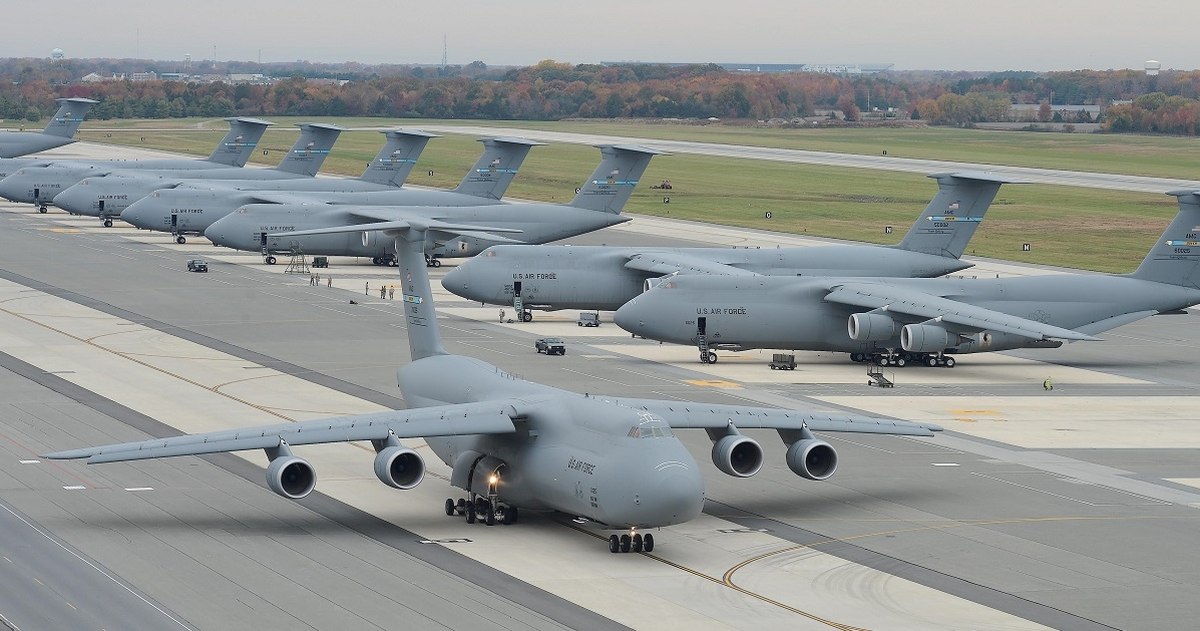
So aside from going to the boneyard and plucking out old A model C-5s and giving them the C-5M treatment—roughly 70 were retired earlier in the decade—there aren’t enough upgraded jets on hand to build multiple squadrons out of. And the eight that were to be returned to service were to bolster existing flying units, not to stand up new squadrons. You see, the problem is that even though the C-5M program has worked marvelously at increasing nearly every aspect of the Galaxy’s globe-trotting performance, availability rates across the C-5M fleet remain dismal.
Whereas the C-17 has proven to be a fairly reliable flyer, with a mission capable rate of around 83%, the C-5M has struggled to make good on its promise to raise the Galaxy out of mission capable rate gutter. As of 2017, the C-5M had a mission capable rate of around just 60%. That is nearing the realm of needing two aircraft to a one’s job—not good if you are trying to turbo-charge the USAF’s ability to shuffle gear around the great expanse of the Pacific Ocean.
As the next decade gets underway, the Air Force will have to really start looking for a solution for its post-Globemaster III, and even post Galaxy, airlift needs. In the longer-term, the USAF has been eyeing more exotic airlift capabilities, like blended-wing-body designs, but anything like that is going to come at a high cost and will have to compete with far ‘sexier’ high-priority aircraft programs. Even pushing the C-17s out another ten years, to an early 2040s out of service date, doesn’t give the USAF all that much time to stand up and deliver on an entirely new strategic airlifter or family of strategic airlifters, for that matter.
In the end, not every airlifter has to land on an unimproved airstrip in the middle of nowhere or carry an Abrams main battle tank. At least building up some organic airlift capacity by acquiring highly reliable and cost-effective cargo haulers that emanate from commercial types, aircraft whose military development has already been paid for, would allow the C-17 community to focus more on the tougher missions that really demand the airframe’s unique capabilities.
Contact the author: Tyler@thedrive.com
